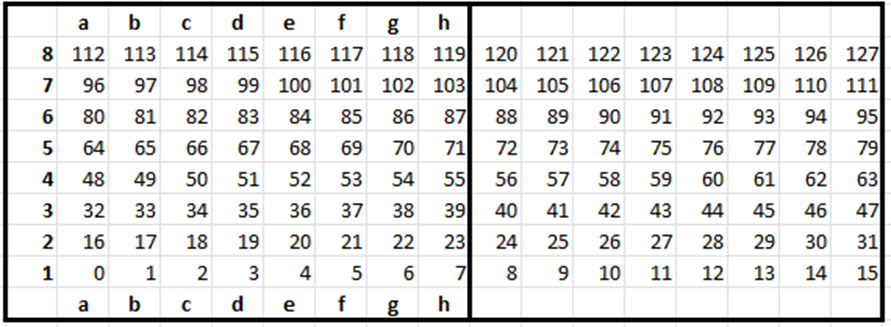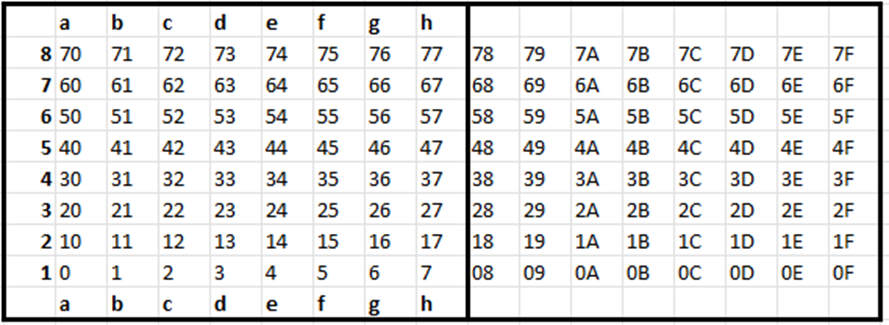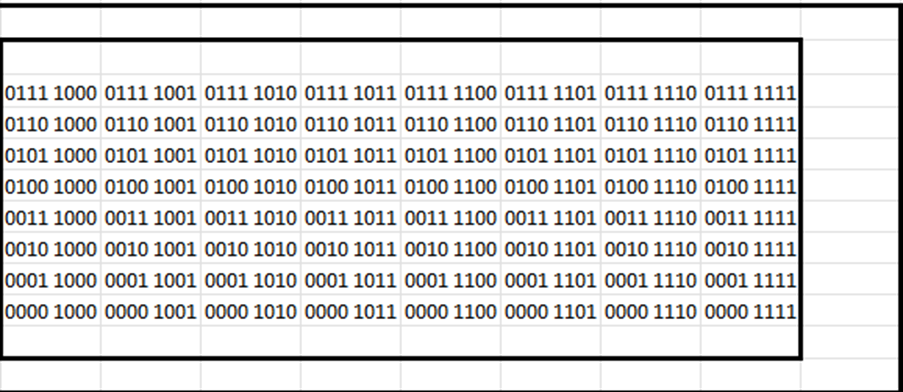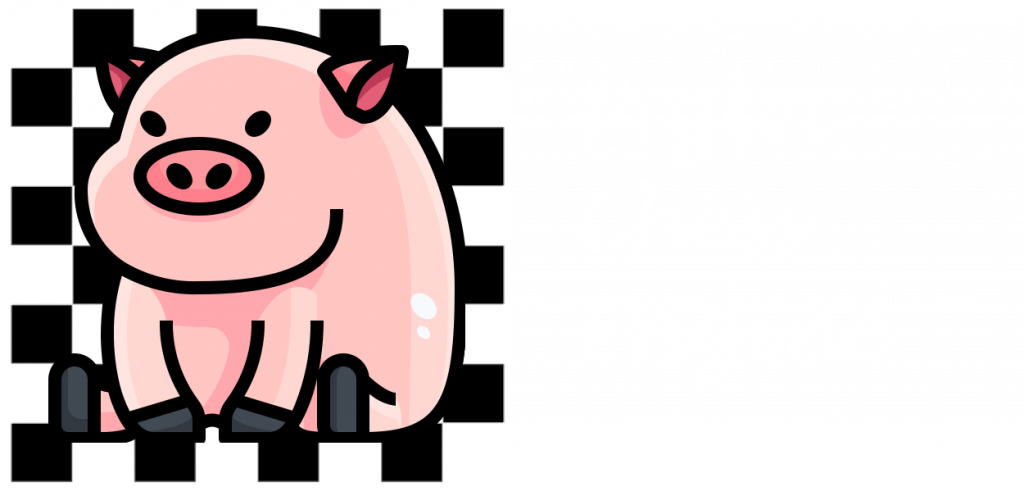The chess board representation that I have used is known as 0X88. A 128 byte array is used to represent the board.
0x88 board – decimal representation

0x88 board – hex representation

The board is 16 by 8 in size, the size of two 8 by 8 chess boards. The on-board squares are represented by the first 8 columns. The second 8 columns are off board.
Square a2 is decimal 16, a8 is 112, h8 is 119.
I prefer to think of the board representation in 8 bit binary where the leftmost 4 bits of the binary number represent the board rank (row) indexed 0 to 7, and the right side 4 bits of the binary number represent the board file (column indexed 0 to 7).


The second 8 columns of the board which are off board.
Why is the representation names 0x88?
You can see, from the binary representation, that if the 8 bit is set, the square is off board to the right. This is the basis of the 0x08 test, which is explained later. This test can be combined with an off the top or bottom of the board test,, the 0x80 test, which tests whether the square is less than 129 (hex 80) and greater than 0. The tests combines, 0x88 give the name to the board representation.
Converting
You can find the index of any square, given its file (0 to 15) and rank (0 to 7), using the formula:
index = row index *16 + column index
so:
a8 is (7 x 16) + 0 = 112.
h8 is (7 *16) + 7 = 112 + 7 = 119.
2 is (1*16) + 0 = 16
To find the index of a square in hexadecimal:
The rank is stored in the left side 4 bits of an 8 bit binary number.
The file is stored in the right side 4 bits of an 8 bit binary number.
So square C5 will be rank 4 (0100 in binary) file 2 (0010 in binary)
Put them together to get 0100 0010 which is 42 hex.
The formula for this would be:
Index [0x88] = ((rank index <<4) + file index
So for square C5:
Rank is 4 or 0000 0100 in binary.
Rank <<4 (bit shifted 4) is 0100 0000
File is 2 or 0000 0010 in binary.
Index is 0000 0100 + 0100 0000 = 0100 0010 binary or 42 Hex.
Also:
file[0 to 7] = square[0x88] &7 (uses bitwise and operator &)
rank[0 to 7] = square[0x88] >>4 (uses bitwise right shift >>)
To find the file of square C5 (42 hex) we calculate 0100 0010 & 0000 0111 which is 0000 0010 or 2.
To find the file of square C5 (42 hex) we calculate 0100 0010 which is 0000 0100 or 4.
Testing if we are on the board
The 0x08 test
If you go off the board to the right, the 0x08bit is set,
i.e.
on board 07 is 0111
on board 77 is 01110111
off board 08 and 7E are 8 0000 1000 and 0111 1110. The 8 bit is set.
To test if position is valid use: if(!index & 0x08)
The 0x80 test
128 (squares) is hex 0x080, so we can test if off top or bottom of board with: if(!index & 0 x 80)
The 0x88 test
To see if we are off board, combine 0x08 and 0x80 tests using: if(!index & 0x88)
Finding adjacent squares
Subtract index of square A from square B
If 1, square A is one to left of B
If 16, A is immediately below B
Coding
In Piglet, the board is defined in the Gameboard class as an array of pieces.
Defs::Pieces pieceBoard[128];
Helper functions have been written, using the logic described above, to get a board index for a chess notation, and vice-versa.
unsigned int Gameboard::notationToIndex(char file, char rank)
{
int f = fileAlgabraicToInt(file);
int r = rankAlgabraicToInt(rank);
int index = (r * 16) + f;
return index;
}
string Gameboard::indexToNotation(int index)
{
if (index <= 128)
{
int f = (index & 7);
int r = (index >> 4);
char file = Gameboard::file[f];
char rank = Gameboard::rank[r];
string s;
s.push_back(file);
s.push_back(rank);
return s;
}
else
{
return “-“;
}
}

Leave a Reply